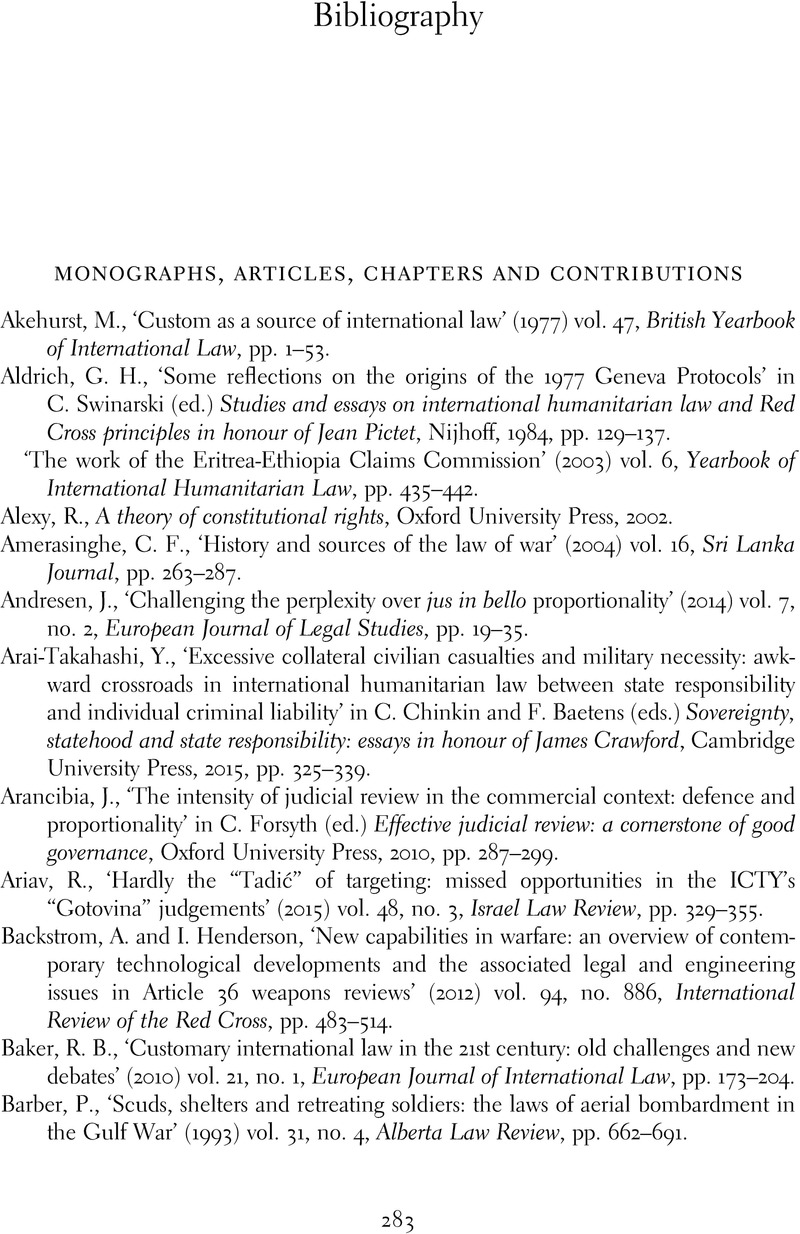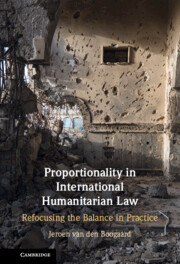Book contents
- Proportionality in International Humanitarian Law
- Proportionality in International Humanitarian Law
- Copyright page
- Contents
- Preface
- Table of Cases
- Table of Treaties
- Abbreviations
- 1 Introduction
- 2 IHL Proportionality in International Law
- 3 Other Standards of Moderation in International Humanitarian Law
- 4 The Concept of Proportionality in International Humanitarian Law
- 5 Proportionality in Context
- 6 Components of the Equation
- 7 Proportionality in Practice
- 8 Assessing Proportionality
- 9 Determining Excessiveness and a Plea for Tilting the Balance towards Humanity
- Bibliography
- Index
- References
Bibliography
Published online by Cambridge University Press: 14 June 2023
- Proportionality in International Humanitarian Law
- Proportionality in International Humanitarian Law
- Copyright page
- Contents
- Preface
- Table of Cases
- Table of Treaties
- Abbreviations
- 1 Introduction
- 2 IHL Proportionality in International Law
- 3 Other Standards of Moderation in International Humanitarian Law
- 4 The Concept of Proportionality in International Humanitarian Law
- 5 Proportionality in Context
- 6 Components of the Equation
- 7 Proportionality in Practice
- 8 Assessing Proportionality
- 9 Determining Excessiveness and a Plea for Tilting the Balance towards Humanity
- Bibliography
- Index
- References
Summary

- Type
- Chapter
- Information
- Proportionality in International Humanitarian LawRefocusing the Balance in Practice, pp. 283 - 308Publisher: Cambridge University PressPrint publication year: 2023



